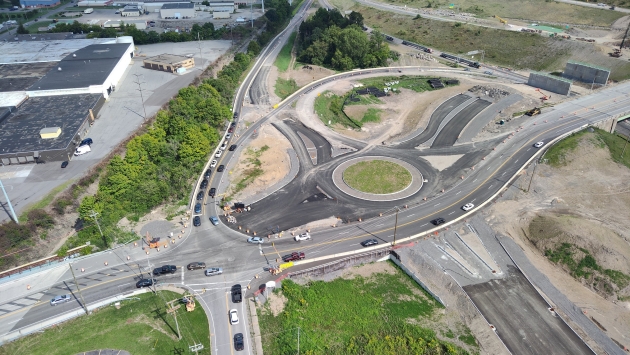Project Overview
The I-81 Viaduct Project in Syracuse, New York, is a transformative infrastructure initiative aimed at replacing the aging Interstate 81 viaduct with a modern, community-focused design. Implemented by the New York State Department of Transportation (I-81 Viaduct Project | Department of Transportation), the project involves significant construction activities, including demolition, road realignment, and bridge reconstruction. Spanning a dense urban environment, the project requires careful management of environmental impacts to ensure compliance with regulations, project commitments and maintain community trust.
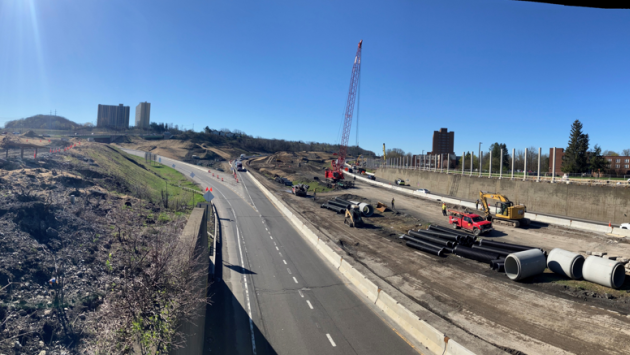
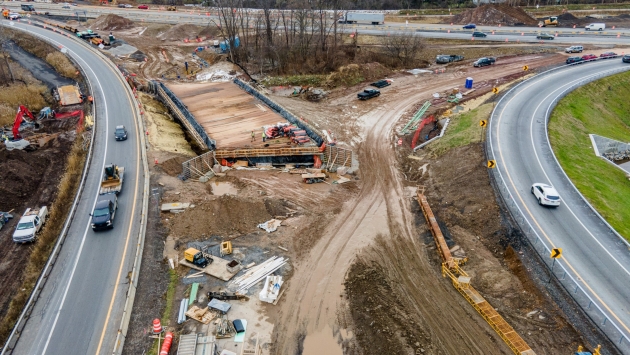
Scope of Works
The I-81 Viaduct Project encompasses:
- Demolition of the existing 1.4-mile elevated viaduct.
- Construction of a community grid system to replace the viaduct, improving connectivity and accessibility.
- Reconstruction of bridges, ramps, and interchanges.
- Implementation of green infrastructure, such as pedestrian pathways and urban landscaping.
- Multi-year construction timeline with phased activities across residential, commercial, and industrial zones.
The project operates in an urban setting, surrounded by schools, hospitals, and residential neighbourhoods, necessitating stringent environmental oversight.
Environmental Challenges
The construction activities pose several environmental challenges:
- Noise: Heavy machinery, demolition, and pile-driving can generate increased noise.
- Dust and Air Quality: Excavation, demolition, and material handling can produce particulate matter (PM10, PM2.5, PM1).
- Regulatory Compliance: The project must adhere to New York State Department of Environmental Conservation (NYSDEC) standards and federal air quality regulations as well as project specific commitments established in the Joint Record of Decision / Findings Statement issued under the National Environmental Policy Act and New York State Environmental Quality Review Act by the Federal Highway Administration and New York State Department of Transportation.
These challenges necessitated robust environmental monitoring to mitigate impacts, ensure compliance, and foster community trust.
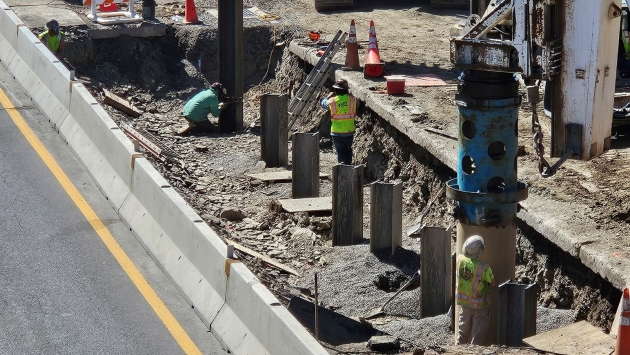
Monitoring Solution: Sonitus Systems’ DM30 Dustsens and EM2030 Sound Level Monitor
HDR, a global leader in engineering and consulting (www.hdrinc.com) is managing noise and particulate monitoring for portions of the project. HDR selected Sonitus Systems’ DM30 Dustsens Particulate Monitor and EM2030 Sound Level Monitor,
integrated with the Sonitus Cloud platform, as a part of the monitoring program to address these challenges and continuous monitoring requirements. The equipment was chosen for its reliability, automation, and seamless integration, as detailed in the provided brochures.
Why Sonitus Systems Equipment?
1. DM30 Dustsens Particulate Monitor:
- Comprehensive Dust Monitoring: The DM30 simultaneously measures PM10, PM2.5, and PM1, critical for assessing air quality impacts in Syracuse’s urban environment. Its MCERTS certification ensures accuracy and compliance with regulatory standards.
- Heated Inlet for Reliability: The heated air inlet controls moisture, ensuring consistent measurements in Syracuse’s variable climate, including humid summers and snowy winters.
- Low Maintenance and Flexible Power: With mains, battery, and solar power options, the DM30 is ideal for long-term deployment across the project’s multiple sites. Its low power mode supports extended monitoring in remote areas.
- Real-Time Data Upload: Measurements are automatically uploaded to the Sonitus Cloud for immediate analysis, enabling HDR to monitor dust levels and respond to exceedances promptly.
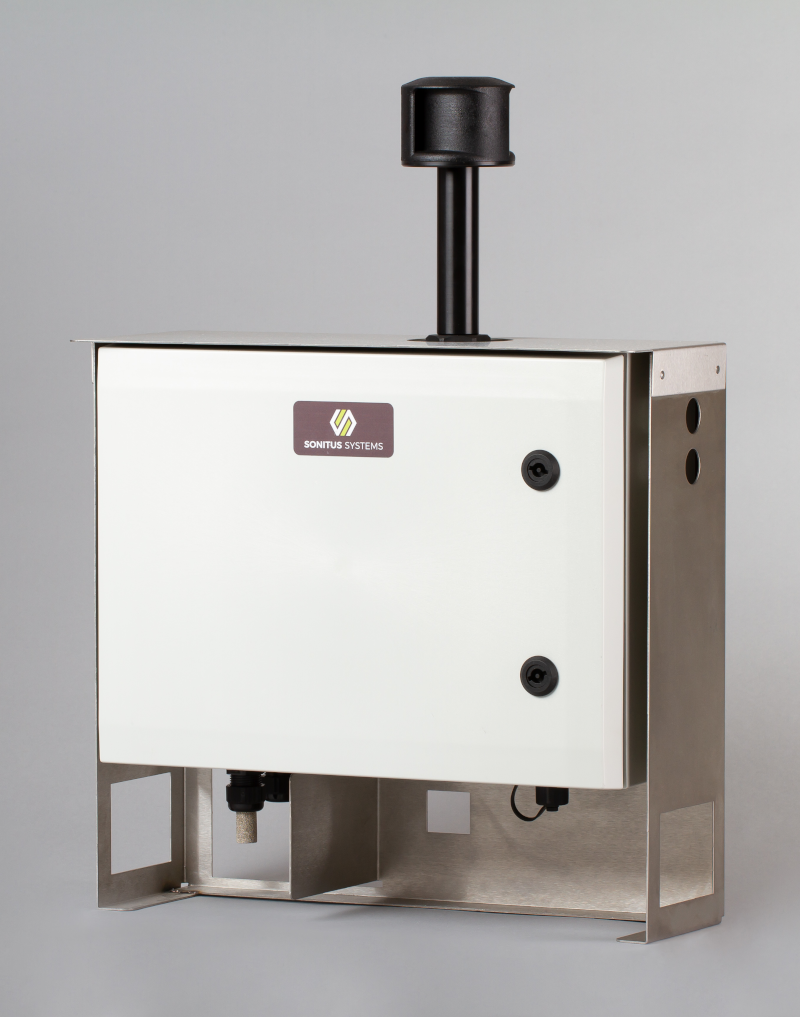
2. EM2030 Sound Level Monitor:
- High Accuracy and Range: Compliant with IEC 61672 Class 1 standards, the EM2030 offers a dynamic range of 17 to 121 dB(A) and a frequency range of 20 Hz to 20 kHz, capturing a wide spectrum of construction-related noise.
- Automated Audio Capture: The audio capture function records clips when noise exceeds predefined thresholds, with AI-driven noise identification via the Sonitus Cloud.
- Rugged and Easy to Deploy: Designed for tough environments, the EM2030’s simple setup allowed rapid installation across multiple monitoring points in Syracuse.
- Optional Features: The microphone heater ensured reliable performance during winter, while frequency analysis (1/1 or 1/3 octave) provided detailed acoustic data for compliance reporting.
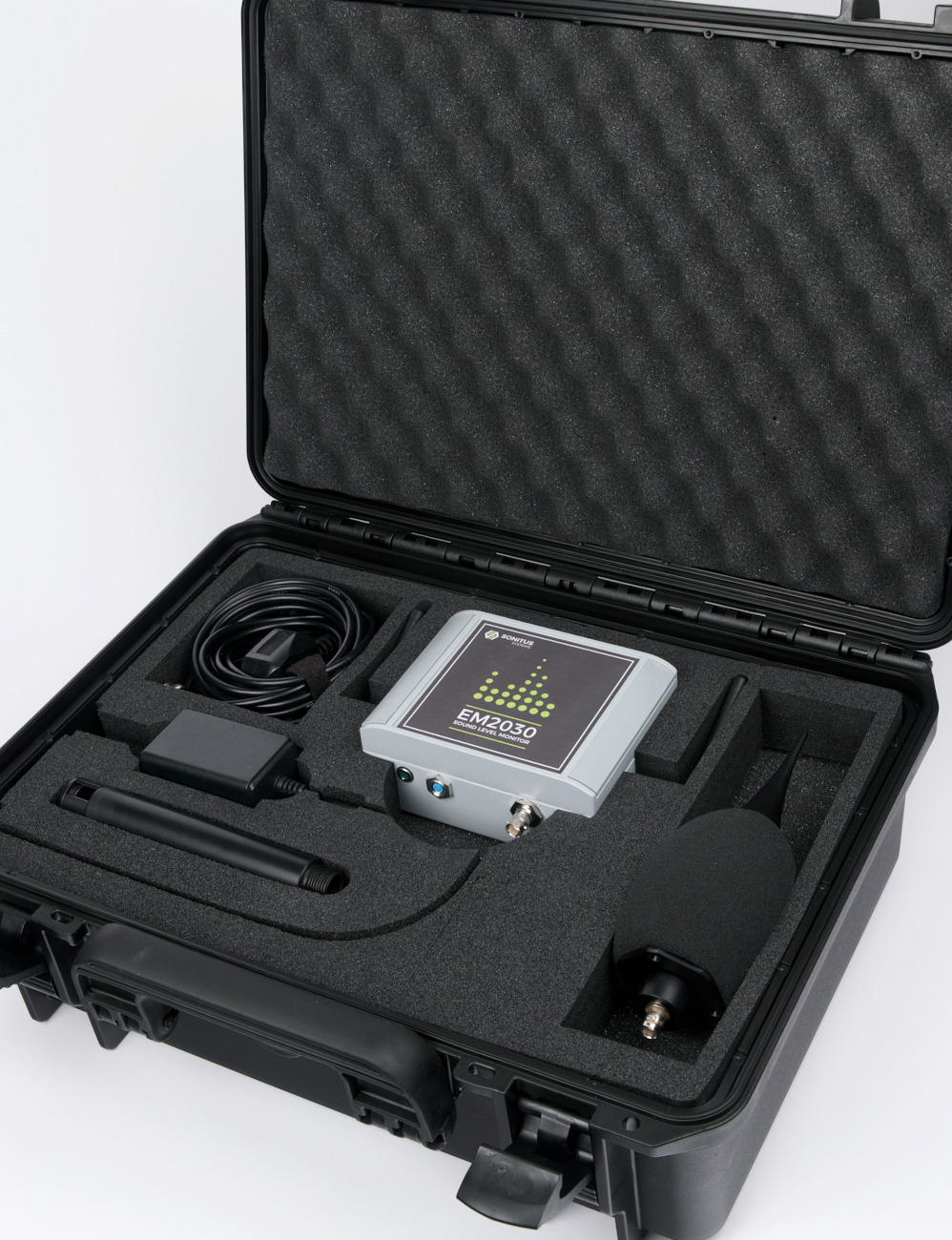
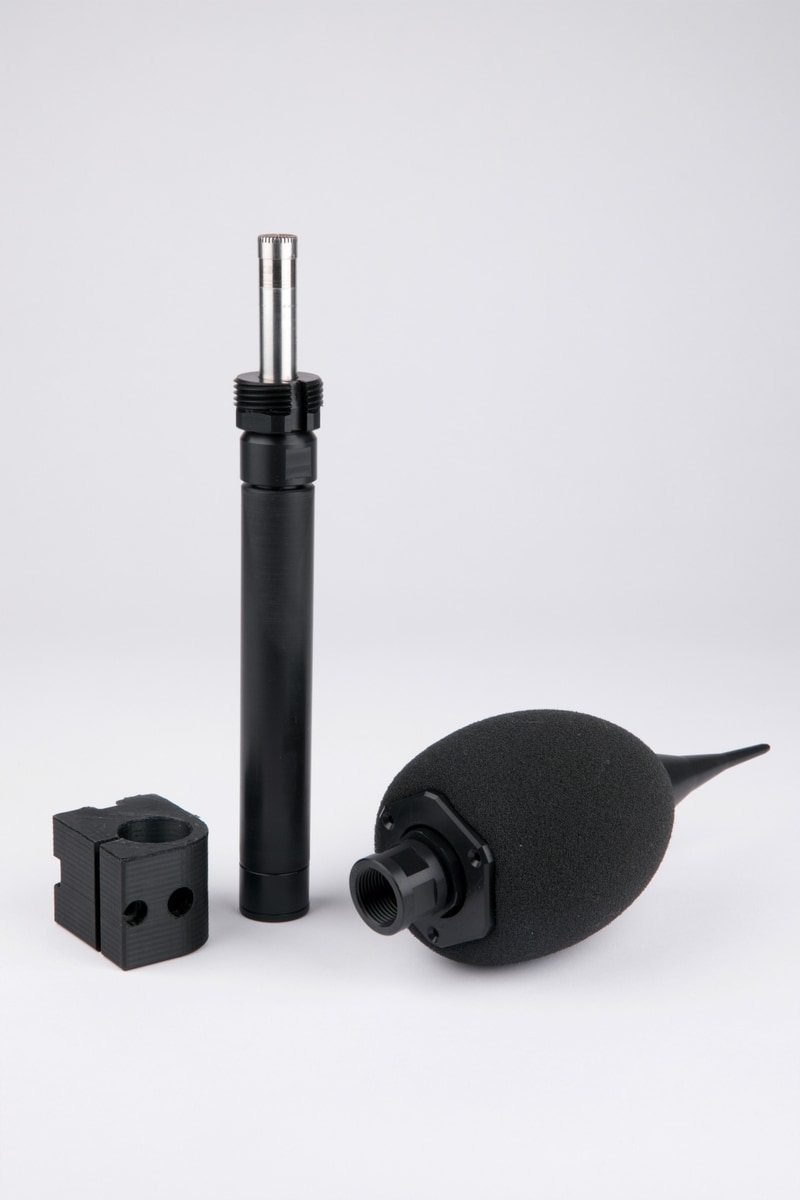
3. Sonitus Cloud Platform:
- Real-Time Alerts and Thresholds: The platform’s custom time-based thresholds for noise and dust trigger instant notifications when limits are approached, enabling HDR to quickly respond.
- Automated Compliance Reporting: Comprehensive trend analysis and automated reports streamline compliance.
- Secure API Integration: The platform’s enterprise-ready API seamlessly integrates with HDR’s existing project management systems, ensuring efficient data flow and centralized oversight.
- Permanent Record Keeping: Secure, cloud-hosted data storage in Ireland provides a reliable audit trail for regulatory or stakeholder purposes.

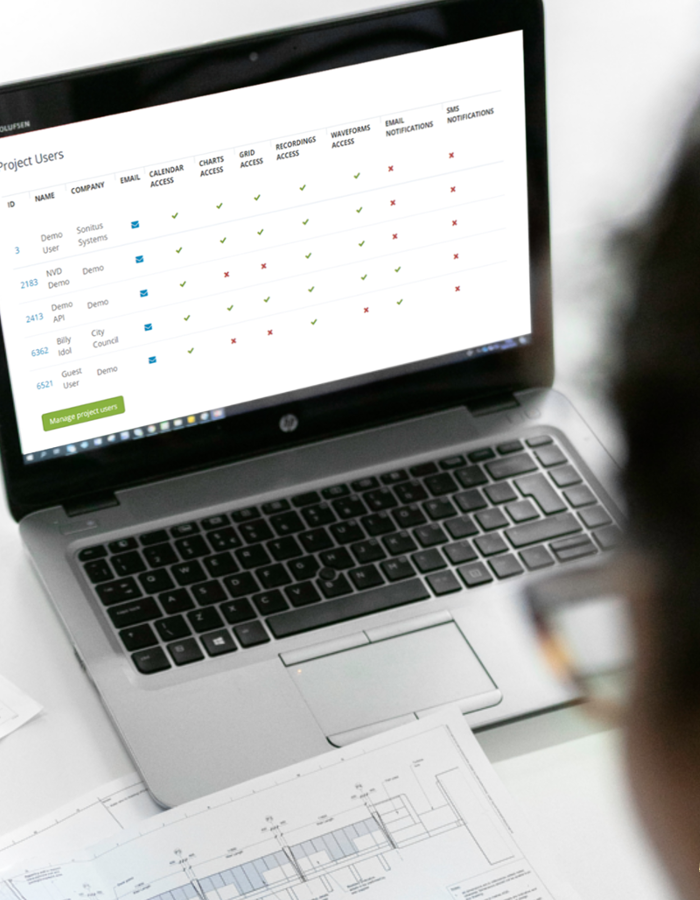
Benefits of the Solution
- Proactive Environmental Management: Real-time alerts and audio identification enable HDR to respond to dust issues before they escalate to the level of regulatory exceedance. HDR is able to notify NYSDOT and their contractors so action can be taken.
- Regulatory Compliance: Automated reporting and accurate measurements allow for efficient reporting and documentation of compliance.
- Operational Efficiency: The intuitive Sonitus Cloud interface and automated features reduced the need for manual data analysis, allowing HDR’s team to focus on monitoring. The equipment’s low maintenance and rugged design minimizes downtime.
- Scalability: The flexible deployment options of the DM30 and EM2030 supported monitoring across the project’s varied sites, from urban cores to peripheral zones, adapting to the project’s multi-year timeline.
Monitoring Solution
To address some of the environmental challenges of the I-81 Viaduct Project in Syracuse, New York, HDR employed advanced monitoring equipment from Sonitus Systems, integrated with the Sonitus Cloud platform for real-time data management. The monitoring strategy is being executed in phases to adapt to the project’s evolving needs as NYSDOT works through various contracts and phases of construction.
In accordance with the Community Air Monitoring Plan developed, the initial installation of continuous monitors included deploying four DM30 Dustsens units. These particulate monitors measure PM10, PM2.5, and PM1 levels, providing critical
data on dust and diesel emissions during early construction activities such as demolition. The units’ heated air inlets ensured reliable performance in Syracuse’s variable climate, delivering accurate measurements to assess particulate concentrations in the project area.
As construction progressed, nine additional units have been added to expand the monitored area. This includes:
- EM2030 Sound Level Monitors, which assessed noise levels with IEC 61672 Class 1 accuracy and utilized audio capture with AI-driven noise identification to pinpoint specific sources of disturbance.
- Additional DM30 Dustsens units, extending dust monitoring coverage to a broader area of the project.
- DM30N Sitesens combined noise and dust units, efficiently monitoring both parameters simultaneously at key locations, enhancing data correlation and reducing equipment footprint.
This expanded network was seamlessly integrated with the Sonitus Cloud platform, enabling real-time alerts, and automated reporting. The phased approach allowed HDR to scale monitoring efforts effectively, ensuring compliance with environmental regulations and commitments.
Outcomes
By leveraging Sonitus Systems’ DM30 Dustsens, EM2030 Sound Level Monitor, DM30N Sitesens and Sonitus Cloud platform, HDR is successfully managing the continuous monitoring requirements for air and noise on the I-81 Viaduct Project.
Key outcomes include:
- Streamlined compliance reporting, saving time and resources for HDR’s environmental team.
- Rapid response to environmental alerts and exceedances.
Conclusion
The I-81 Viaduct Project demonstrates the value of advanced environmental monitoring in complex urban infrastructure projects. Sonitus Systems’ DM30 Dustsens and EM2030 Sound Level Monitor, paired with the Sonitus Cloud platform, provides HDR with the tools to address noise and dust challenges effectively. The solution’s accuracy, automation, and integration capabilities document compliance and support the project’s success in transforming Syracuse’s transportation landscape.
